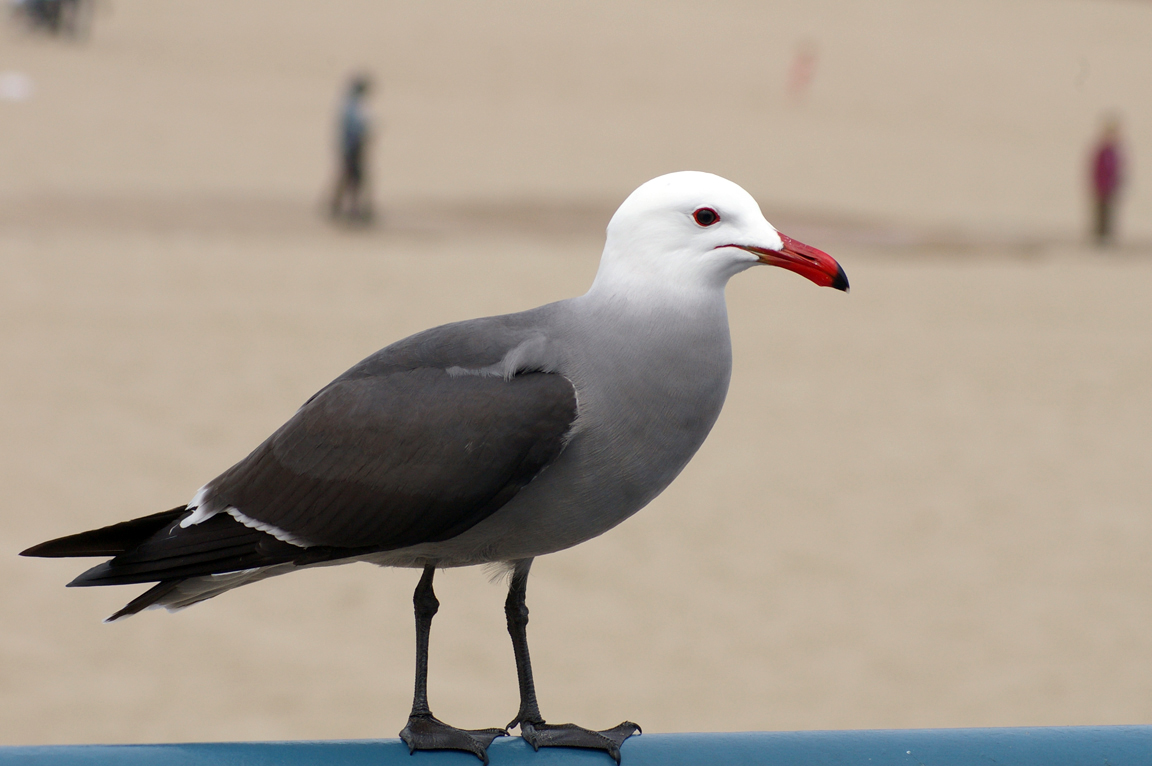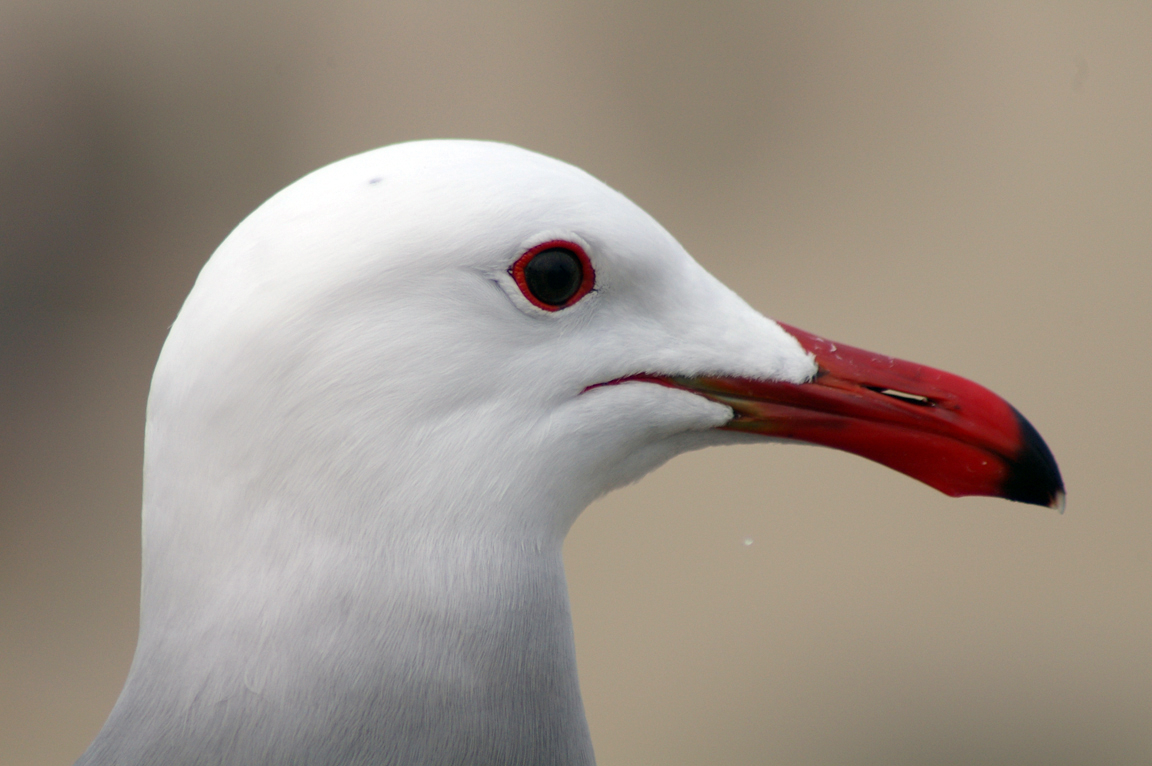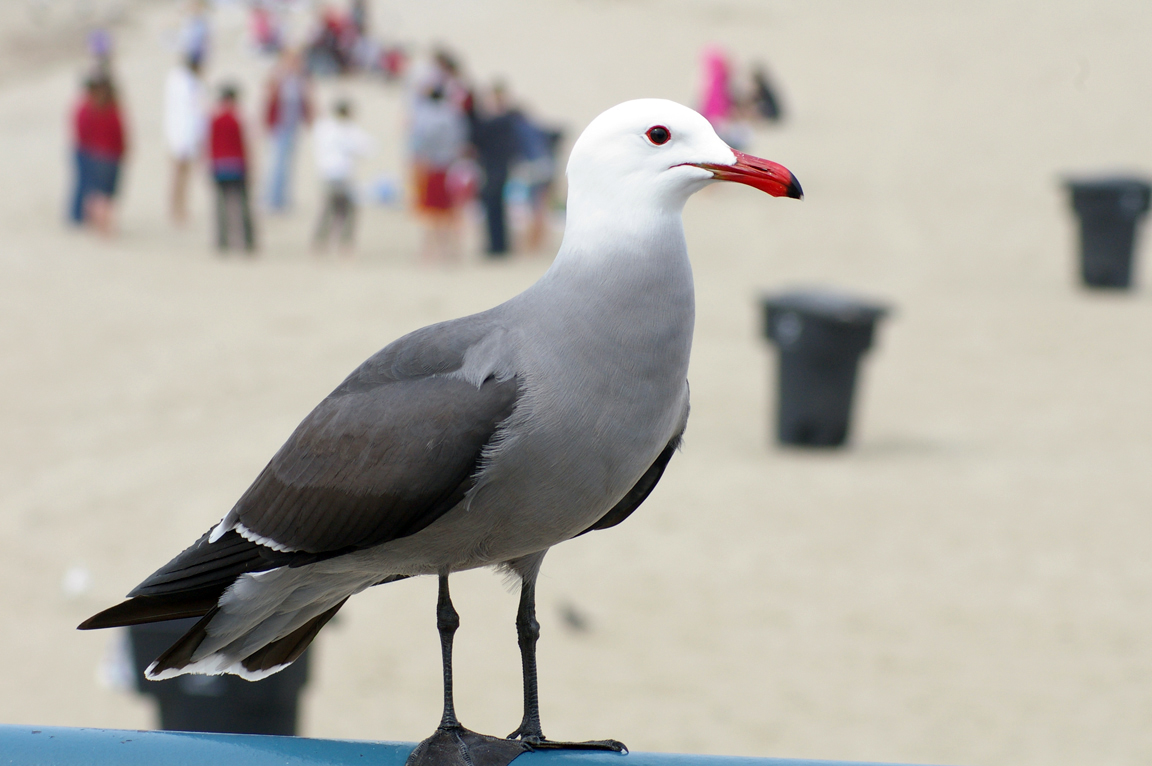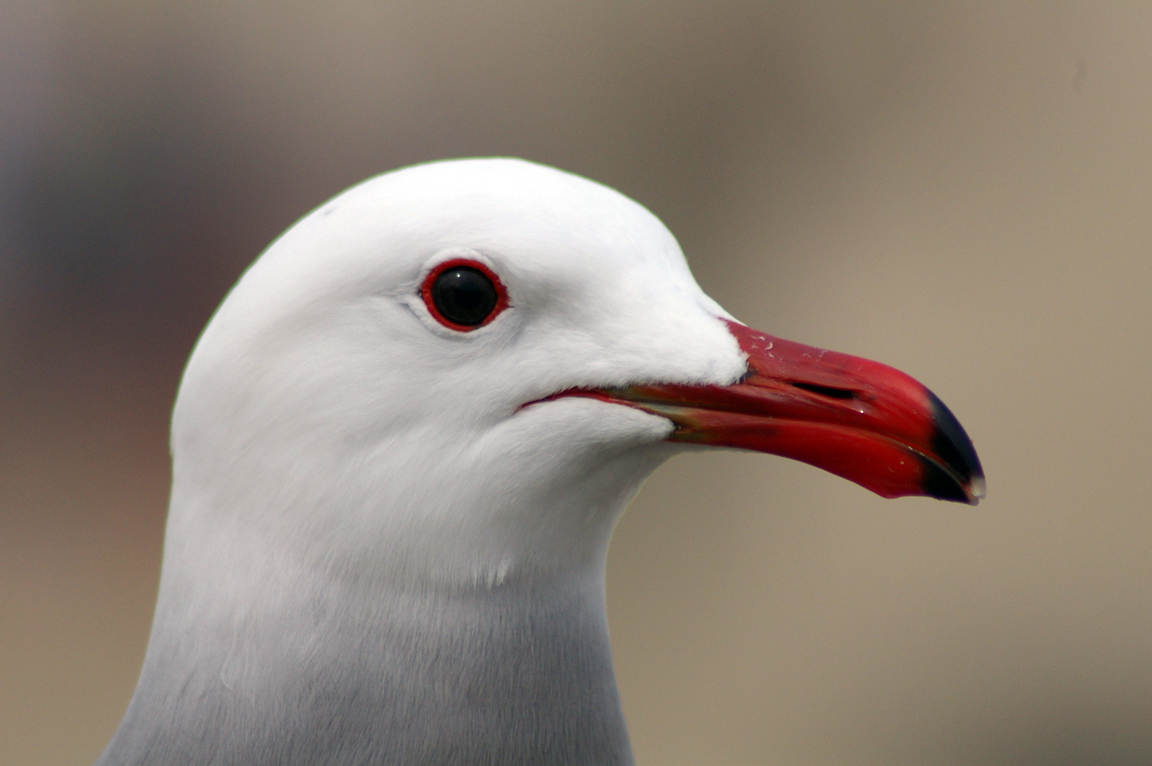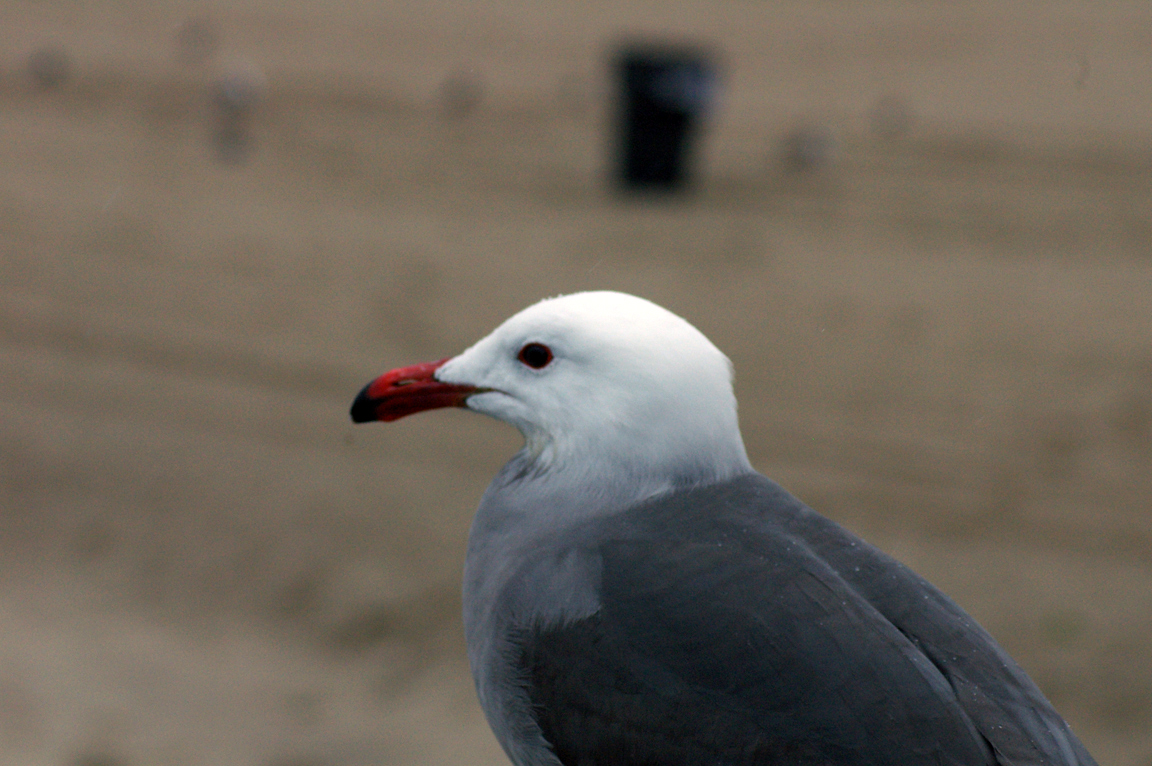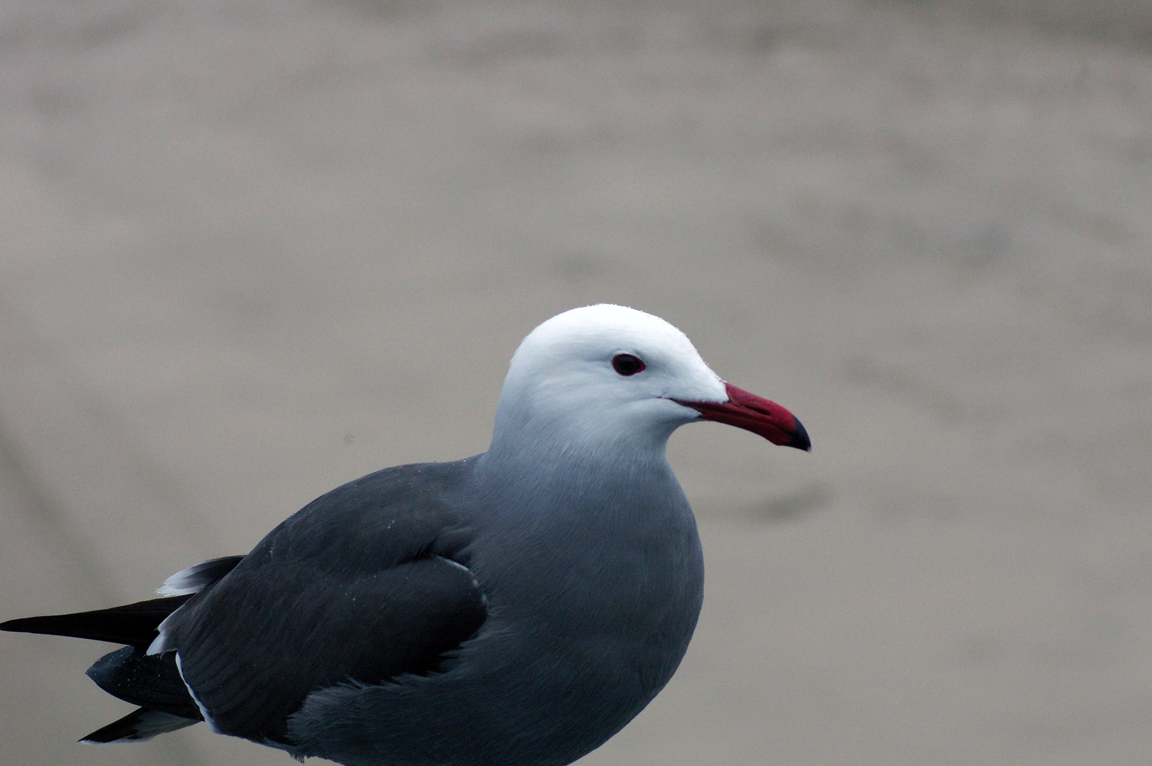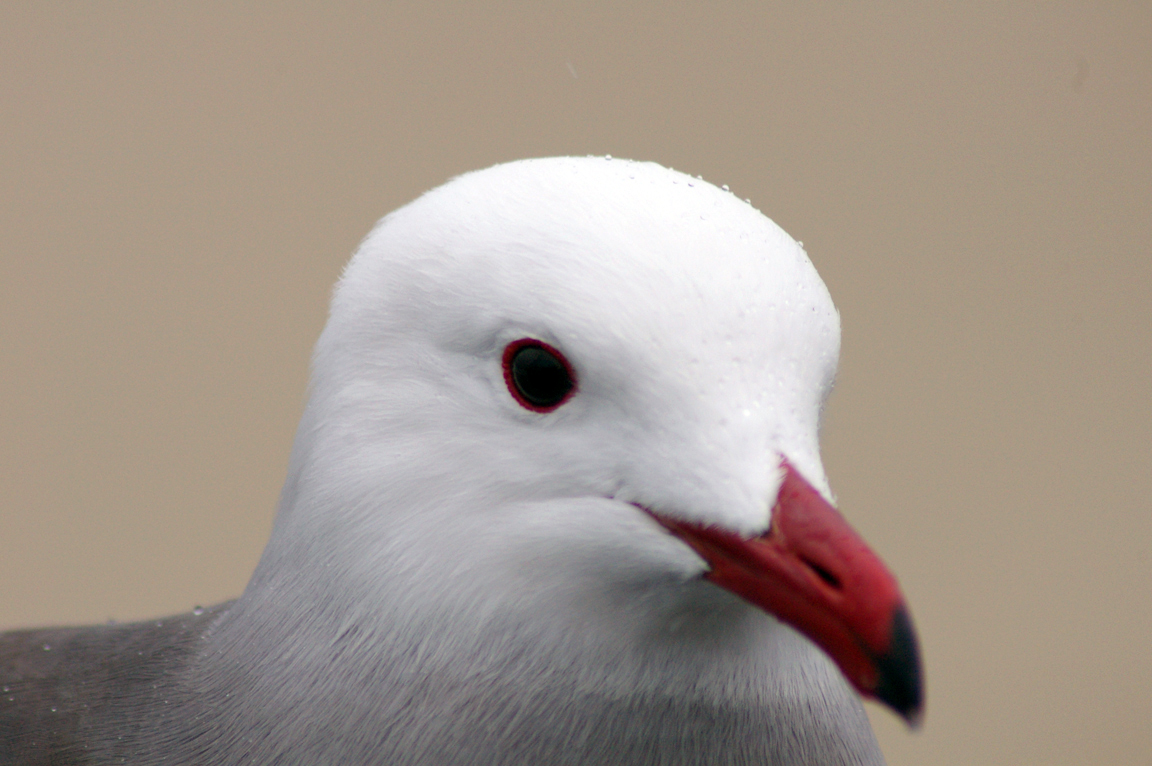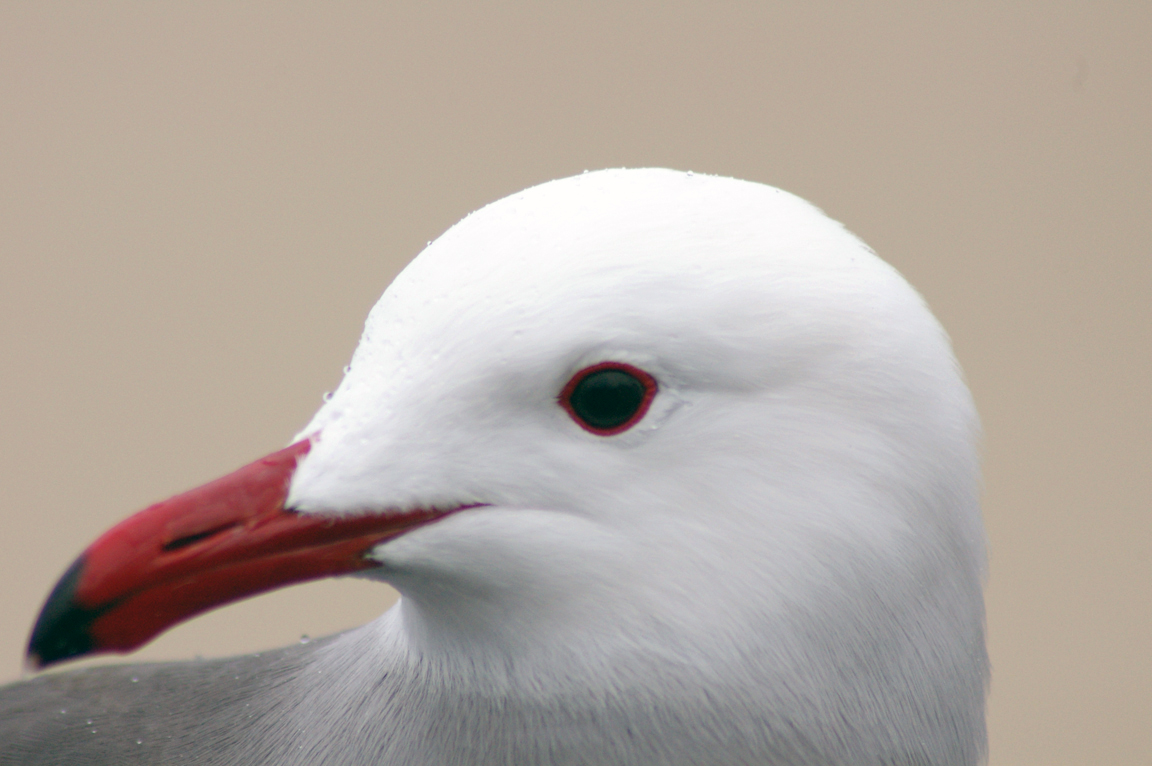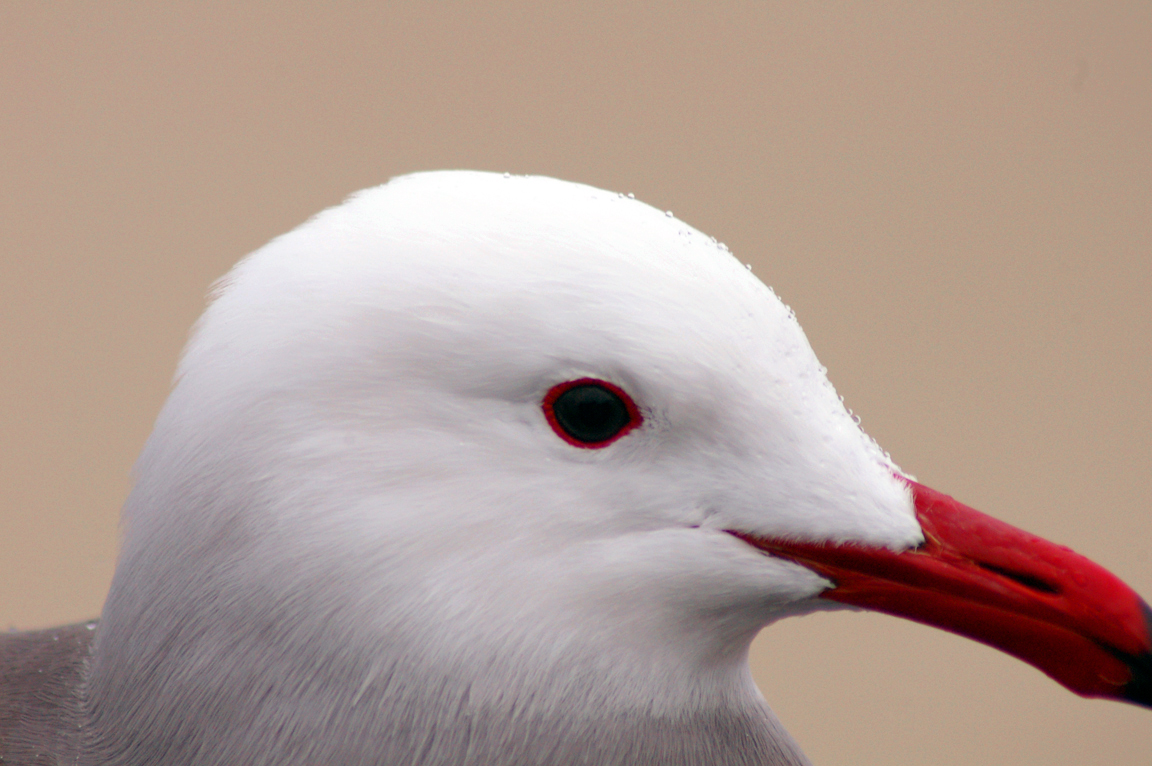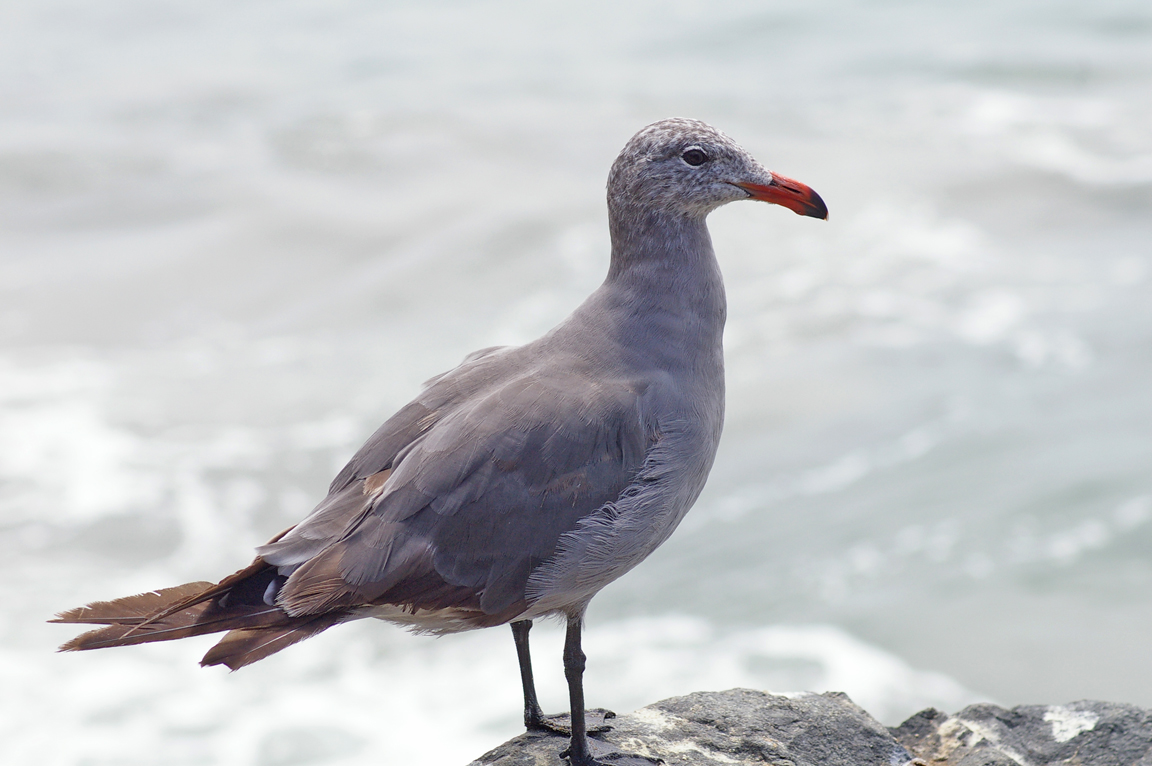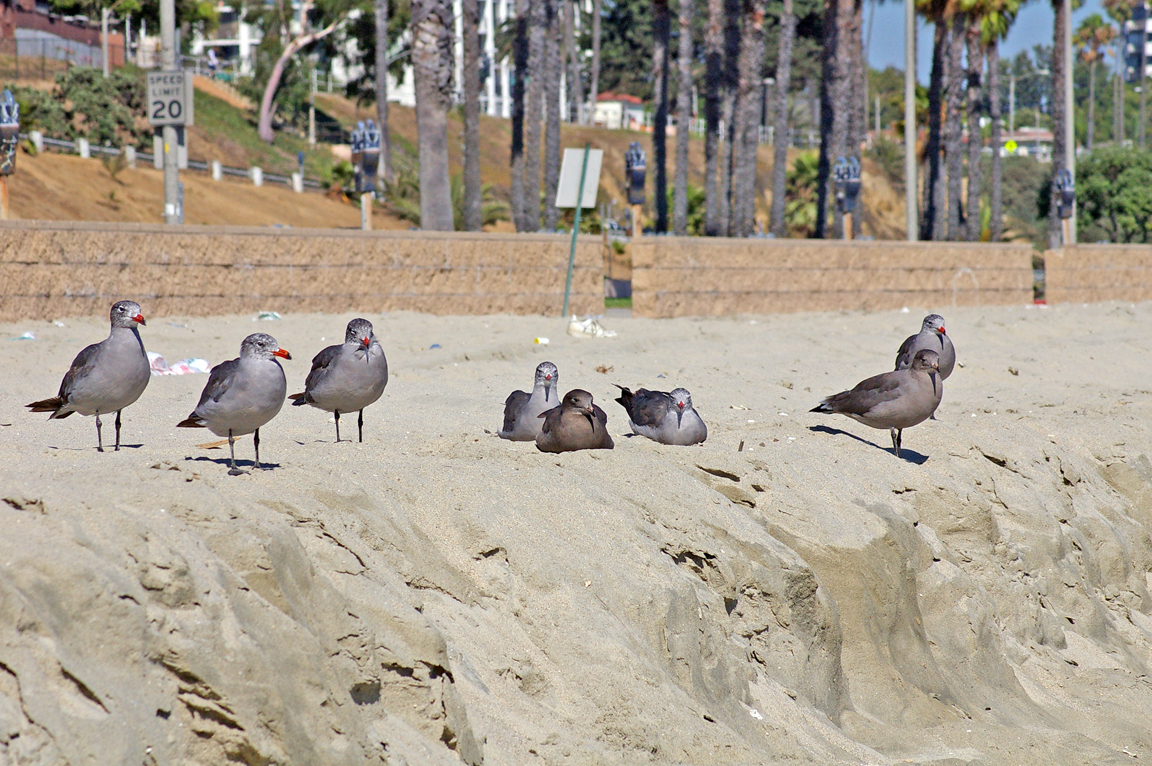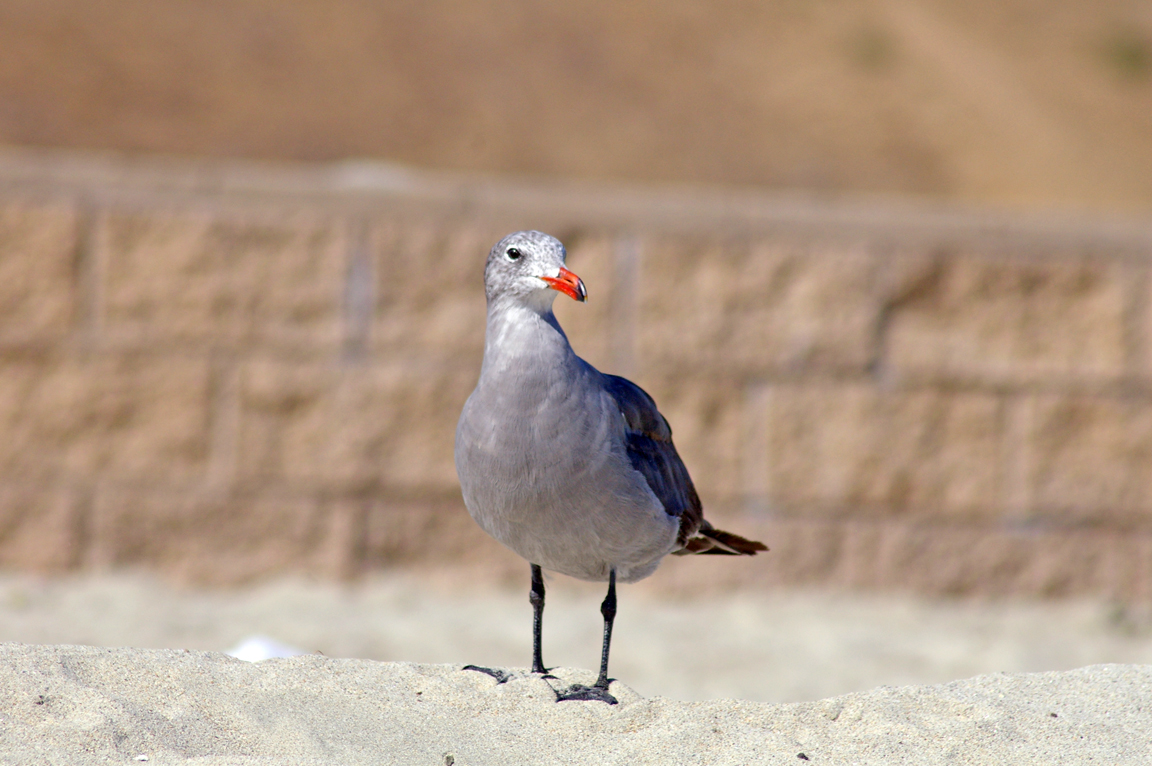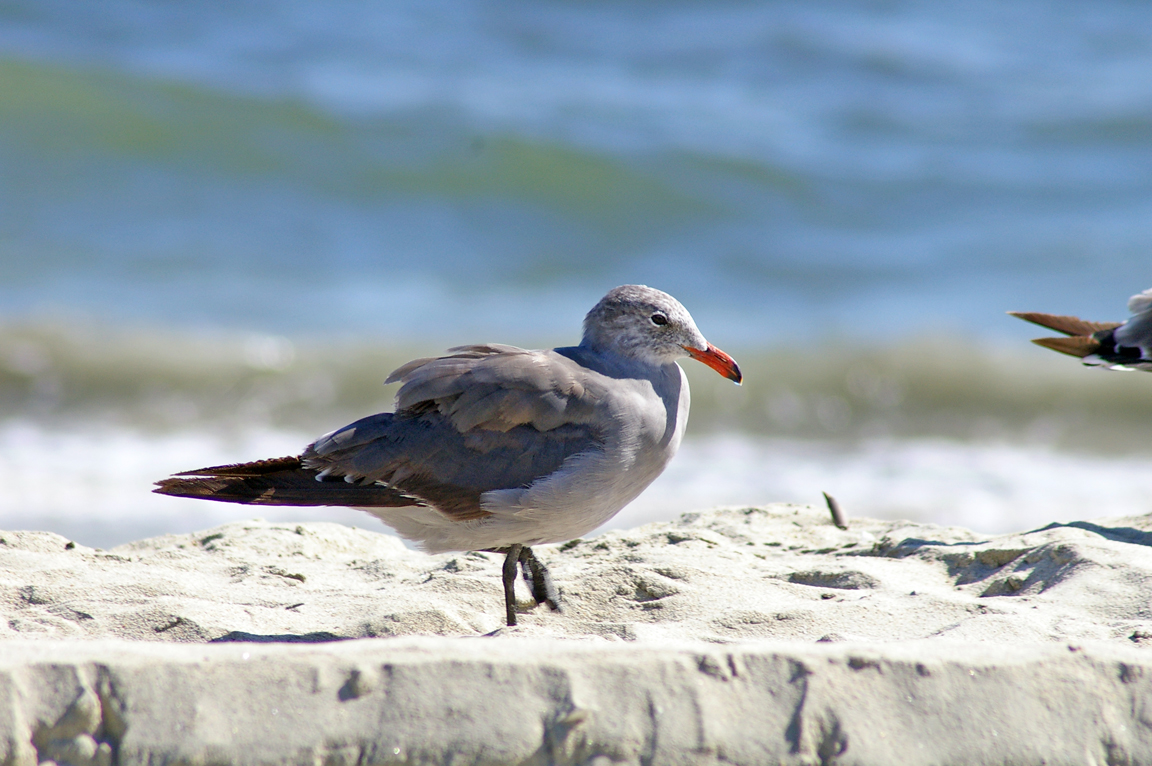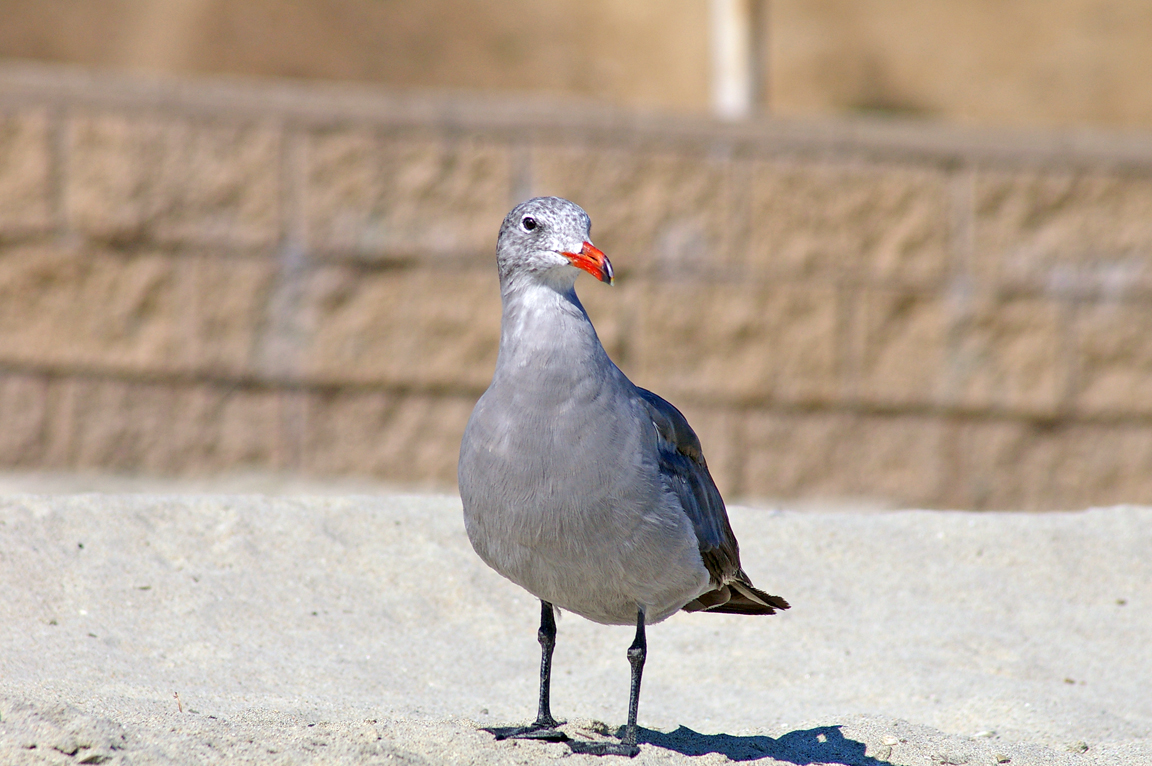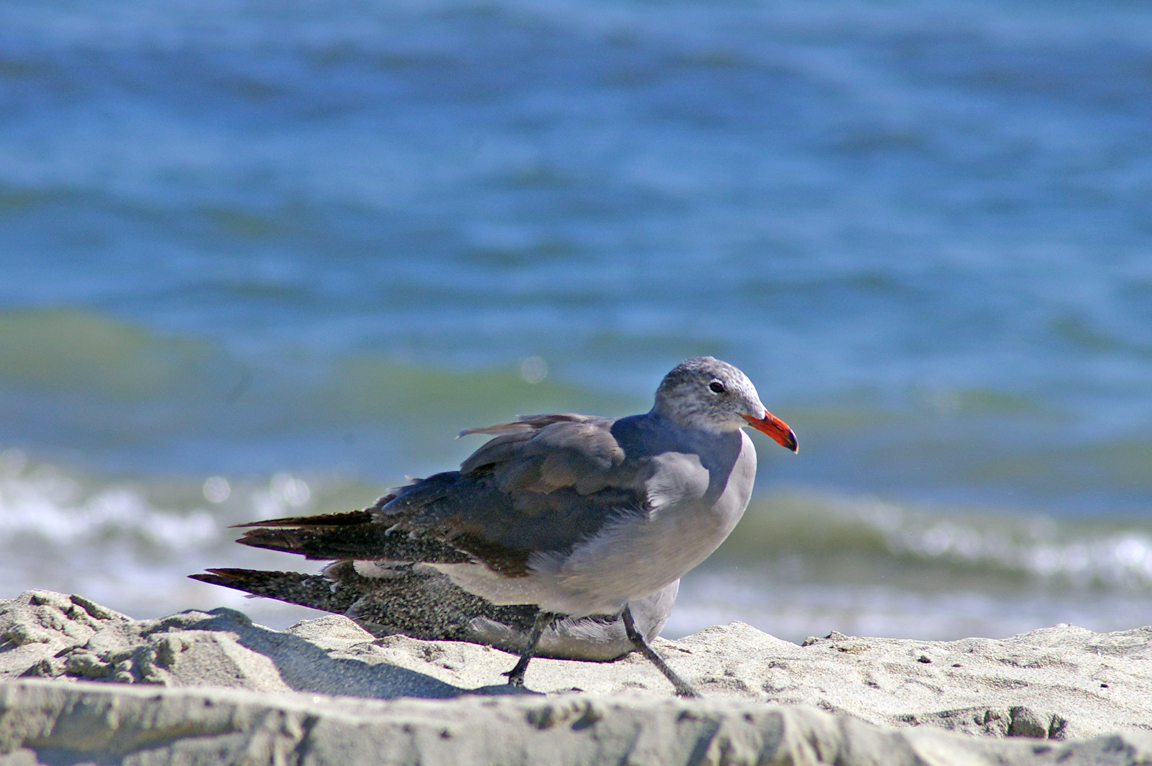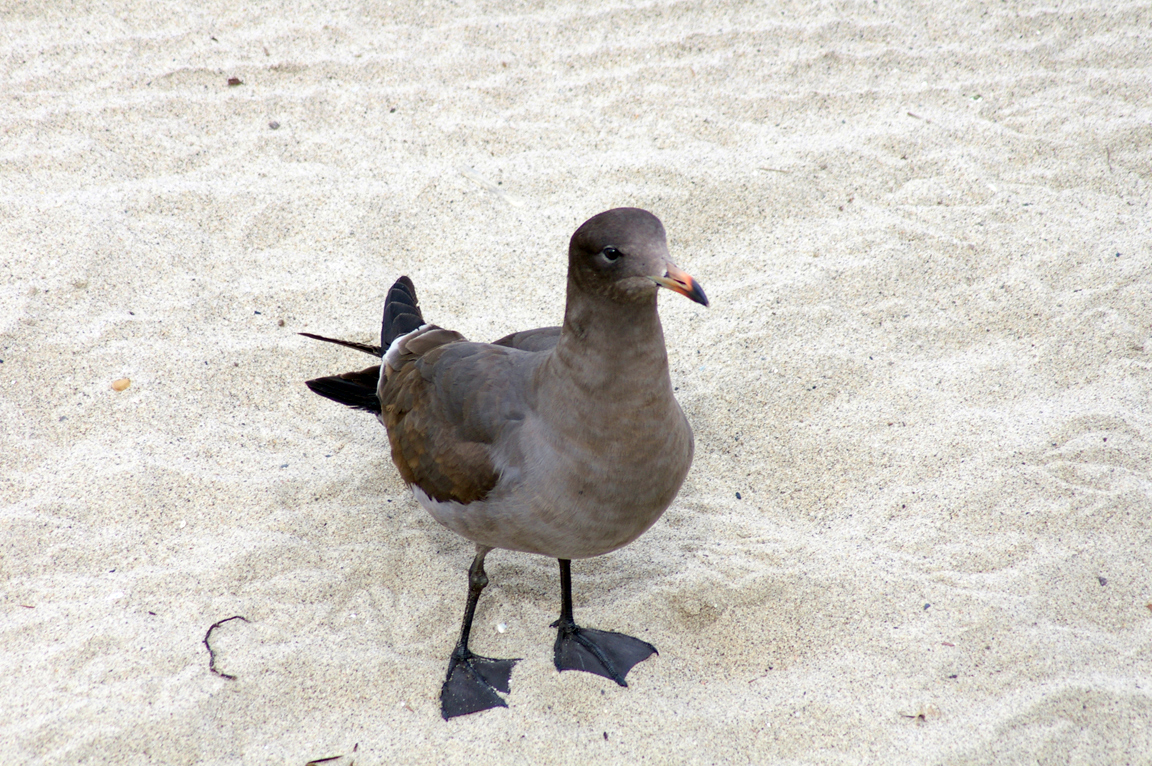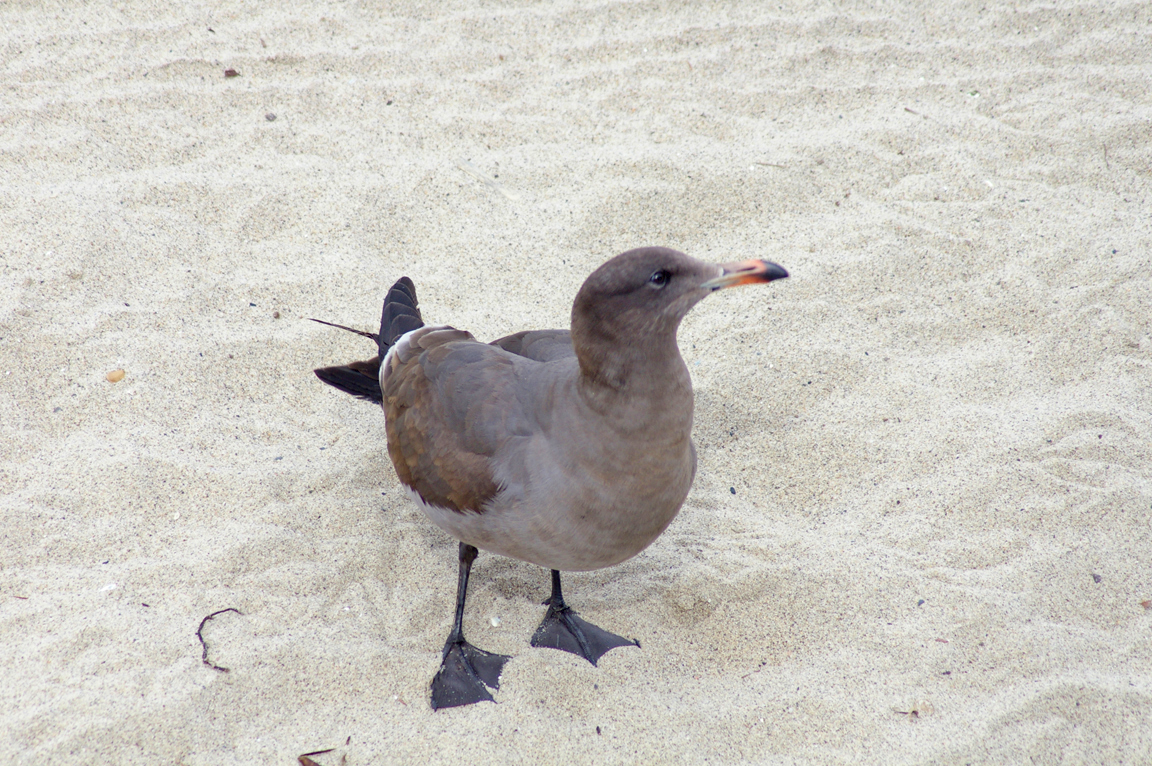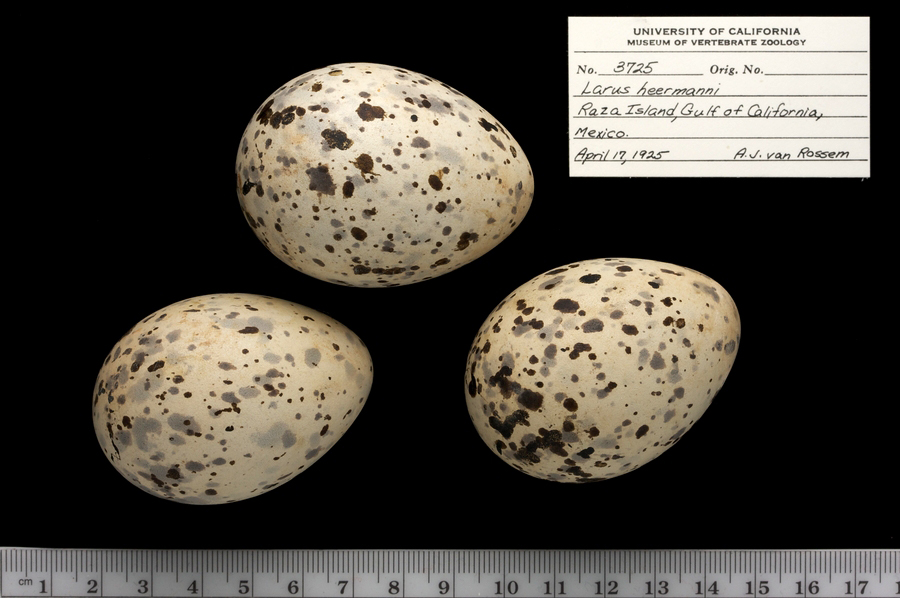|
|
|
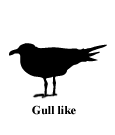 |
Heermann's Gull
|
| Larus heermanni | |
The strikingly marked Heerman's Gull is common along the West Coast of the United States. This gray-bodied, white-headed gull breeds in Mexico and then moves north along the Pacific Coast to southern British Columbia.
Interesting Information
-
The Heerman's Gull, like many other gulls, frequently steals food from other birds. The Brown Pelican is a frequent victim. An adult Heerman's Gull is most likely to try to steal food from an adult pelican, and an immature gull is more likely to steal from an immature pelican.
-
The Heerman's Gull is the only North American gull that breeds south of the United States and comes north to spend the nonbreeding season. After breeding is over in July, the gull quickly comes north all the way to southern Canada. It heads back southward by December, and most breeders are at the breeding islands by March.
-
Perhaps as a result of the increasing populations in Mexico, several attempts have been made by Heerman's Gulls to breed in California. The first was on the island of Alcatraz. So far these attempts have been unsuccessful, but eventual successful nesting is expected.
Description
Adult Description
-
Size: 46-53 cm (18-21 in)
-
Wingspan: 104-115 cm (41-45 in)
-
Weight: 371-643 g (13.1-22.7 ounces)
-
Medium-sized gull.
-
Body gray.
-
Back darker.
-
Head white.
-
Bill red.
Breeding (Alternate) Plumage
Head and neck white. Hindneck, uppertail coverts, underparts pale gray. Mantle dark gray. Bill red with black tip. Wingtips black. Secondaries black with white tips. Tail black with narrow white tip. Eyes dark brown. Legs black.
Nonbreeding (Basic) Plumage
Head mottled with gray, brown, and white.
Sex Differences
Sexes alike in plumage, male slightly larger than female.
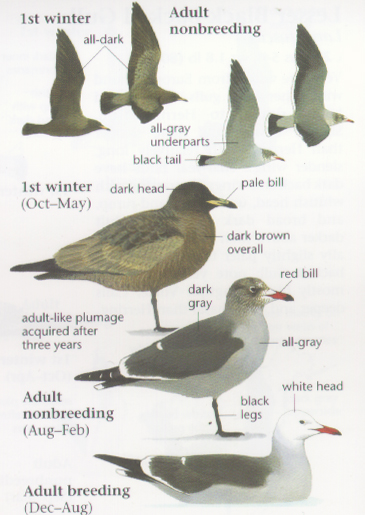
Photo taken from: The Sibley Field Guide by David Allen Sibley
Immature
Juvenal plumage: Uniformly sooty brown all over. Buff edge to feather tips, giving scaly look. Bill two-toned, with pale flesh base and black tip. Eyes dark. Legs black.
First winter (Basic I): Uniformly sooty brown all over. Bill two-toned, with pale flesh base and black tip. Eyes dark. Legs black. Wing feathers and tail black.
Second winter (Basic II): Body sooty gray. Head and nape slate black. Eyes with thin, pale white crescents above and below. Secondaries and tertials dark with white tips. Tail black with narrow white band at tip.
Second summer (Alternate II): Imperfect whitish hood. Body sooty gray. Eyes with thin, pale white crescents above and below. Secondaries and tertials dark with white tips. Tail black with narrow white band at tip.
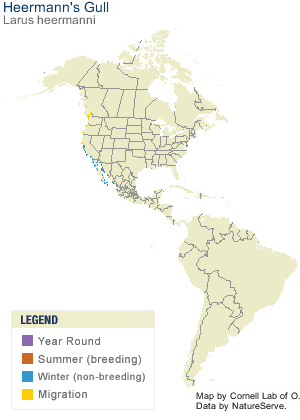
© 2003 Cornell Lab of Ornithology
|
Habitat |
|
|
Behavior |
|
Picks food from surface of water, plunges into water to pursue fish. Hovers and dips over waves. Steals food from marine mammals and other birds. |
|
Food |
|
Small fish, marine invertebrates, lizards, insects, refuse, and carrion. |
Taxonomy
| Kingdom: | Animalia |
| Phylum: | Chordata |
| Subphylum: | Vertebrata |
| Class: | Aves |
| Order: | Charadriiformes |
| Family: | Laridae |
| Subfamily: | Larinae |
| Genus: | Larus |
| Species: | Larus heermanni |
Similar Species |
|
|
Bird Sound |
|
Rather quiet away from breeding grounds. Call a nasal "aow, aow." |
|
Eggs look like this |
|
Photo taken from: ARCTOS Collaborative Collection Management Solution |
Videos
Heermann's Gull
Adult Non-breeding Plumage #1
Heermann's Gull
Adult Non-breeding Plumage #2
